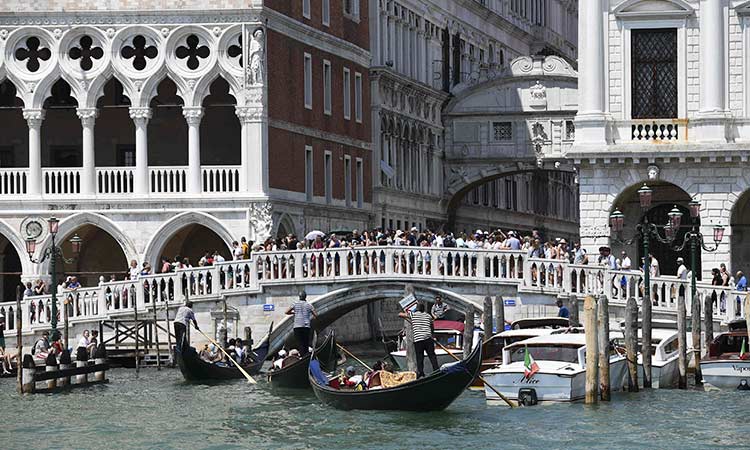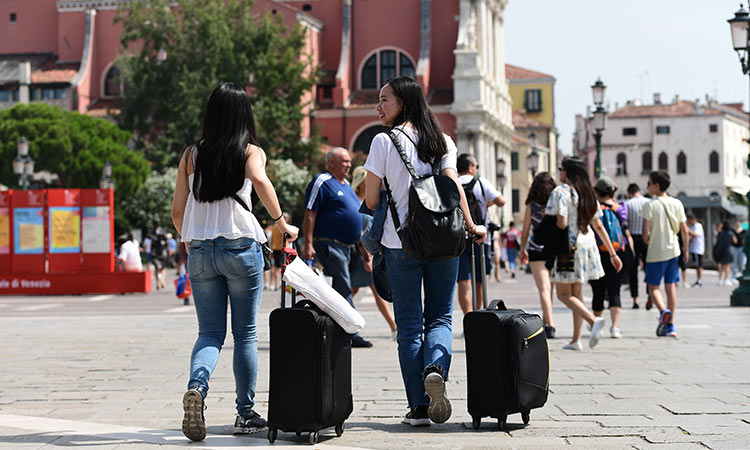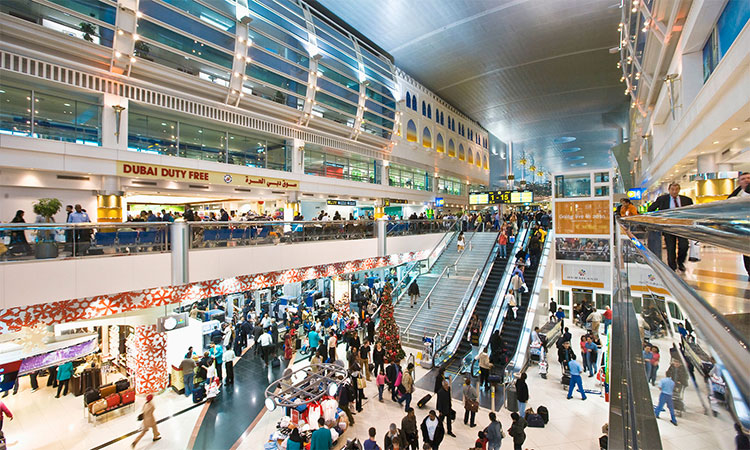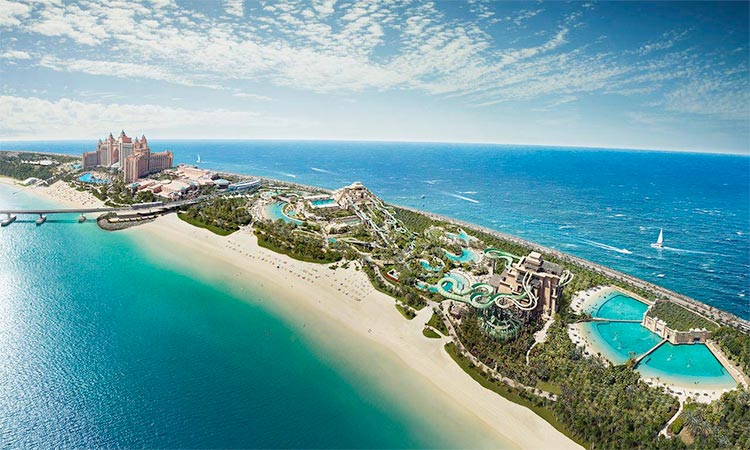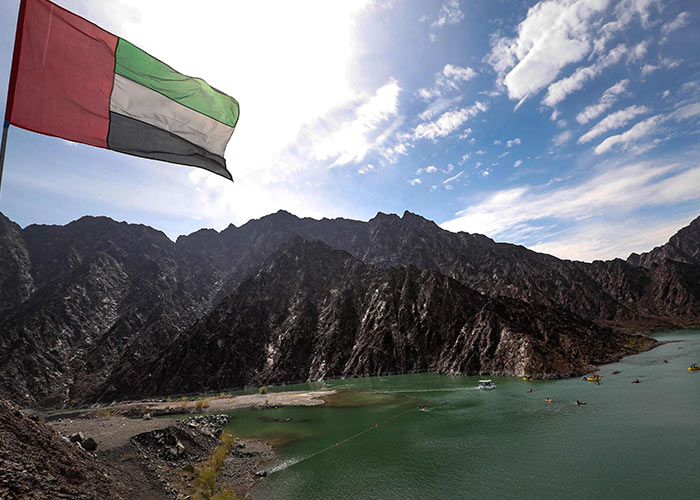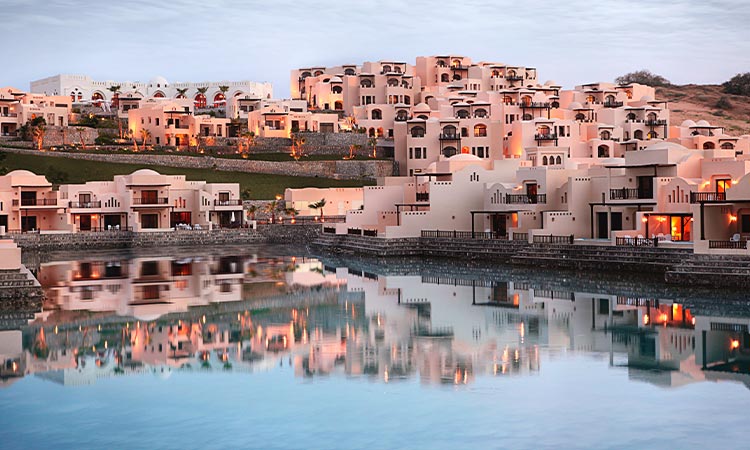Top tourism spots crack down as they become victim of own success
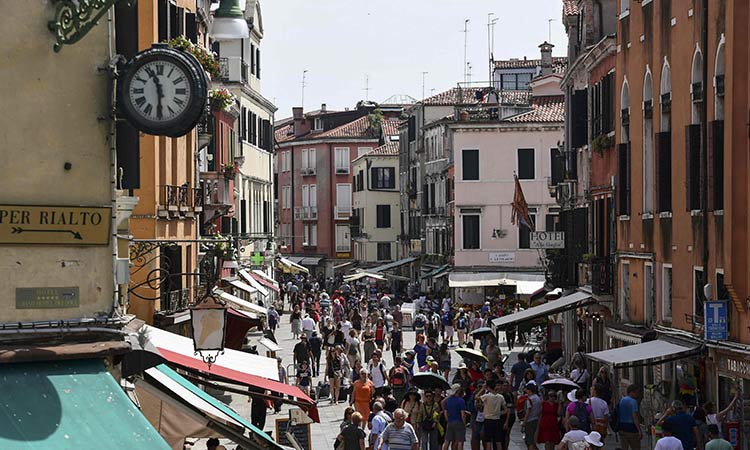
Tourists walk between shops in a street of Venice. Miguel Medina/AFP
It is not the sheer number of tourists descending on Venice that bothers Italian food blogger Monica Cesarato so much as the type of visitor.
Not so long ago Venice was considered the trip of a lifetime, said Cesarato, who runs gastronomic tours there. Visitors took days, even weeks, to explore the City of Canals, spending money in local restaurants and businesses.
Today they pile off cruise ships and coaches, go on whirlwind tours run by non-locals, take umpteen selfies and buy little more than a cheap trinket made in China.
As millions of holidaymakers head off for their summer break, increasing numbers of popular destinations are saying they cannot take much more.
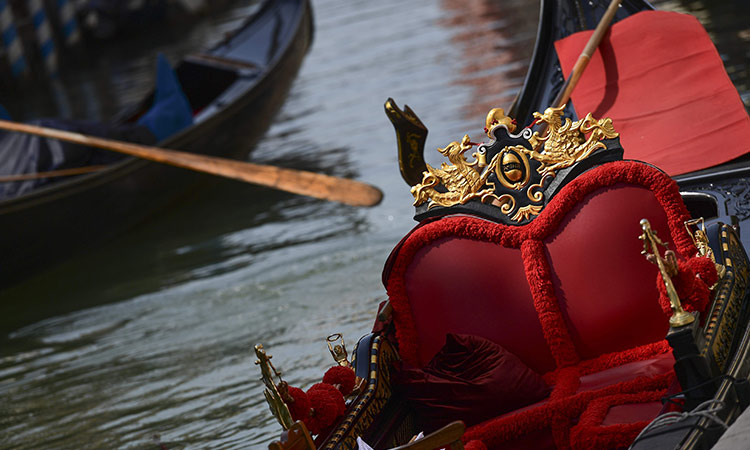
The chair of a gondola in Venice. Miguel Medina/AFP
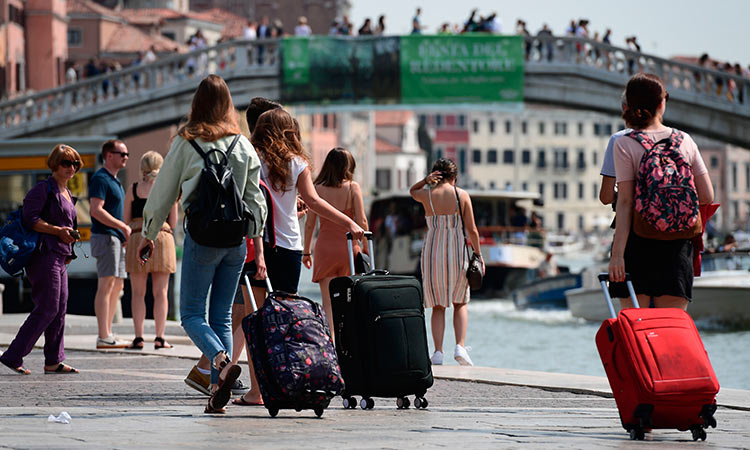
Tourists carry luggages in the streets of Venice, next to the Canal Grande. Miguel Medina/AFP
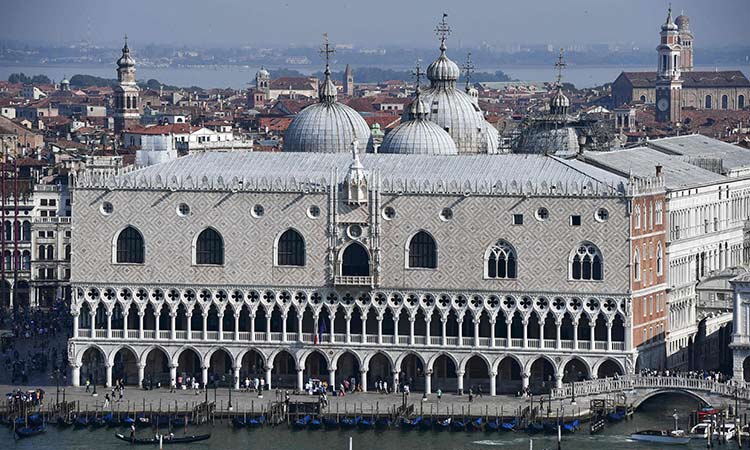
The "Palazzo Ducale", seen from San Maggiore's bell tower on San Giorgio Maggiore island in front of Venice. Miguel Medina/AFP

Tourists walk in the streets of Venice. Miguel Medina/AFP
While tourism creates jobs and wealth, there is growing awareness of its negative impacts, from environmental damage to the destruction of neighbourhoods as residents are priced out.
The problems have created a backlash, spawning anti-tourism movements and protests from Amsterdam to Rome and Dubrovnik, the Croatian city featured in the TV show "Game of Thrones".
SOARING NUMBERS
Mass tourism took off after World War Two. Last year there were 1.4 billion tourist arrivals, up from 25 million in 1950, according to the United Nations World tourism Organization, with Europe absorbing half of them.
Gondoliers row tourists near the "Ponte dei Sospiri" (Bridge of Sighs) in Venice. Miguel Medina/AFP
The nation generating the most tourists is China - 143 million trips abroad in 2017, while France and Spain receive the most visits - more than 80 million a year.
"The perception of going on holiday has shifted from being pretty much a privilege to becoming very much a right," said Marina Novelli, professor of tourism and international development at the University of Brighton.
"If we look at numbers only, and we don't look in more detail at the impact - economic, social, environmental - we risk killing the goose that lays the golden egg."
CRUISE SHIPS
Nowhere epitomises the problems as much as Venice, which attracts 30 million tourists a year to its magnificent canals and bridges.
Tourists carry luggages in the streets of Venice. Miguel Medina/AFP
As visitor numbers soar, the "Queen of the Adriatic" has seen its own population plummet from about 175,000 after World War Two to just over 50,000.
UNESCO has threatened to add Venice to its list of endangered heritage sites, partly because of problems with tourism.
RENTAL APPS
Another phenomenon fuelling anti-tourism protests is the rise of short-stay letting platforms such as Airbnb, which are blamed for hiking rents and changing neighbourhoods.
With landlords able to make far more on holiday lets than traditional leases, housing supply has shrunk and residents have been squeezed out.
Paris has about 60,000 homes listed on Airbnb, Amsterdam 19,600, Barcelona 18,300 and Venice 8,500, according to Inside Airbnb, a website highlighting the company's impact on neighbourhoods.
Reuters
